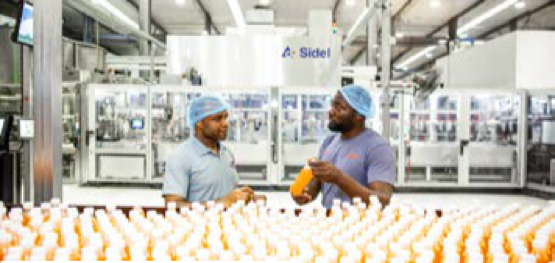
StrongPack’s operation in Nigerian market has a Sidel touch. The company’s mission to become the number one, high-quality, non-alcoholic contract packaging company in Africa has bolstered the greenfield project with four Sidel lines over the span of two years, including a can line, two regular complete PET lines and one PET line integrating Sidel’s ActisTM coating system.
The latter one was critical to increase the drinks’ shelf life, thus addressing some of the challenges in the local distribution chain. By choosing Actis, StrongPack could lightweight the bottles by 25% while redesigning their shapes.
Witnessing these business opportunities in the CSD market, StrongPack started their operations in 2018 as a co-packer of non-alcoholic beverages with some ambitious goals: “In the next five years, we want to become the number one non-alcoholic contract packaging company in all of Africa,” explained Del Tupaz, managing director at Strong-Pack. “At the same time, we aim to be the leading high quality co-packer in Nigeria, whatever the brand. This is fundamental to our business approach and it is definitely paying us back. We have recently started co-packing 60 cl PET bottles for a leading global soft drink company,” he added.
Carbonated soft drinks (CSD) are the second most popular bever-age category in Africa, after bottled water. This segment continues to grow mainly due to the fact that the consumers’ purchasing power is steadily increasing on a continent with the youngest demography globally. However, distribution is complicated by long transportation routes and difficult road conditions, creating a large demand for bottled drinks with longer shelf life.
Within this emerging market, Nigeria is a very interesting case. With 195.9 million inhabitants and a population growth of 2.6% in 2018, it has been showing a healthy CSD performance over the last few years, even during economic slumps (with a volume growth of 11.1% CAGR from 2012 to 2017).
This phenomenon was mainly driven by population increase, price competition and aggressive marketing campaigns from the major global CSD players.



